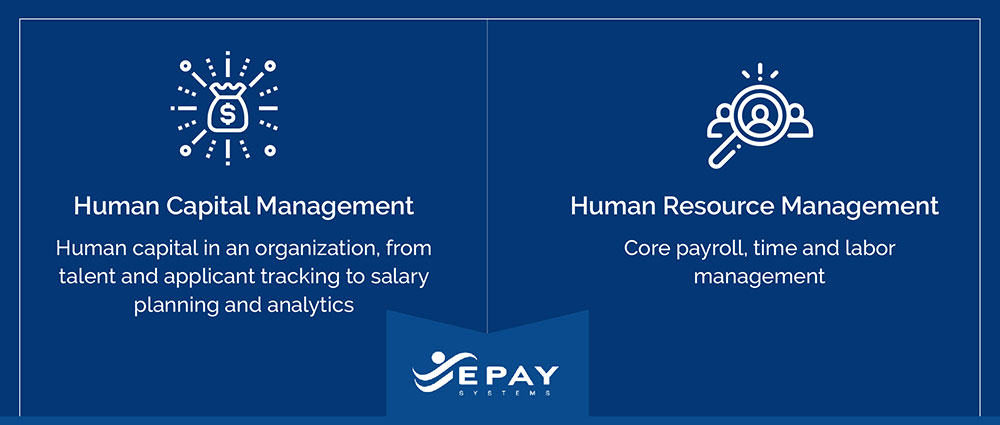HR and marketing professionals seem to interchange the terminology used to describe HR technology solutions. HCM (Human Capital Management) and HRM (Human Resource Management) are the most common terms used. Are they the same?
The Difference Between HCM vs. HRM: Human Capital Management vs. Human Resource Management
Though often used interchangeably with no universal consensus, there are differences between HCM and HRM from an historical evolution perspective. So, what is the difference between HRM and HCM? In simple terms, HRM software solves HR needs for small to mid-sized organizations, while HCM solutions focus on a larger umbrella of functions throughout the complete employee lifecycle. We go more into detail breaking down HCM vs. HRM below.
What is HCM?
HCM is the more all-encompassing term, describing functions that are part of the strategic management of human capital in an organization from talent and applicant tracking to time and attendance and analytics. It also includes budgeting, performance management, and onboarding as well.
How HCM Works

What is HRM?
HRM systems encompass the elements known historically in human resources information systems focusing on the core payroll (originally and oftentimes called HRIS or Human Resources Information Systems.) Additional technology systems used to manage HR functions are included under this umbrella such as benefits administration, employee self-service, and management reporting.

Benefits of an HCM Solution
HCM is critical for organizations that want to maximize the impact of their human capital to help realize their overall goals and objectives. Choosing a vendor that supports your HCM strategy both philosophically and technically is key to an organization’s success. Integrated HCM provides all-encompassing tools over single function HRM solutions.
Consolidation of HR with Business Strategies
Human Resources has well moved beyond transactional processes and procedures. Human capital both in terms of the employment relationship as well as intellect capital has become the broader focus for organizations, consolidating Human Resources with overall business strategy. HCM vendors play a critical role in partnering with organizations to understand their human capital mission and achieve their overarching goals.
Now that you know the difference between HCM and HRM, you can determine which is ideal for your business based on your needs, whether you’re looking for something simpler like HRM or something all-encompassing like an HCM solution.
Choosing the Right HR Solution for Your Organization
If your organization is choosing between HRM or HCM, it’s important to look carefully at what your business needs now and in the future. While it can be hard to determine challenges and needs, it can be simplified by following these steps:
- Identify current issues you are having with your outdated HR system, such as a high cost of ownership or inefficient processes.
- Look into solutions that will solve these issues. It’s important to consider solutions that are scalable, offer actionable data, and similar benefits.
- Lastly, after recognizing challenges and opportunities, you can build the requirements that your company looks for in a HR solution in order to streamline your search for the right system.
FAQs About HCM Solutions
- How big is the HCM market? The HCM market is already large and is continuously growing, thanks to more businesses opting for cloud-based solutions and the surge in remote work. The HCM market is estimated to grow from $17.6 billion in 2020 to around $24.3 billion by 2025, according to MarketsAndMarkets.
- What is HCM data? HCM data is recorded interactions between an organization and its workforce employees. This data offers benchmark comparisons for turnover, pay equity, and more between your organization and industry competitors.
- What other benefits does HCM provide? While HCM helps improve the current state of your organization and your employees, it also can help you hire the right people in the future. HCM data can prevent you from hiring employees don’t fit in with your organization’s culture.
Ease Your HR Workload and Save Money with HCM Software
With one seamless platform and HR administrative services, EPAY Systems can ease the burden on your staff so you can get back to focusing on your core business. Our full suite of unified human capital management solutions help you recruit, staff, manage, and pay your employees. Get started today with a personalized demo.
